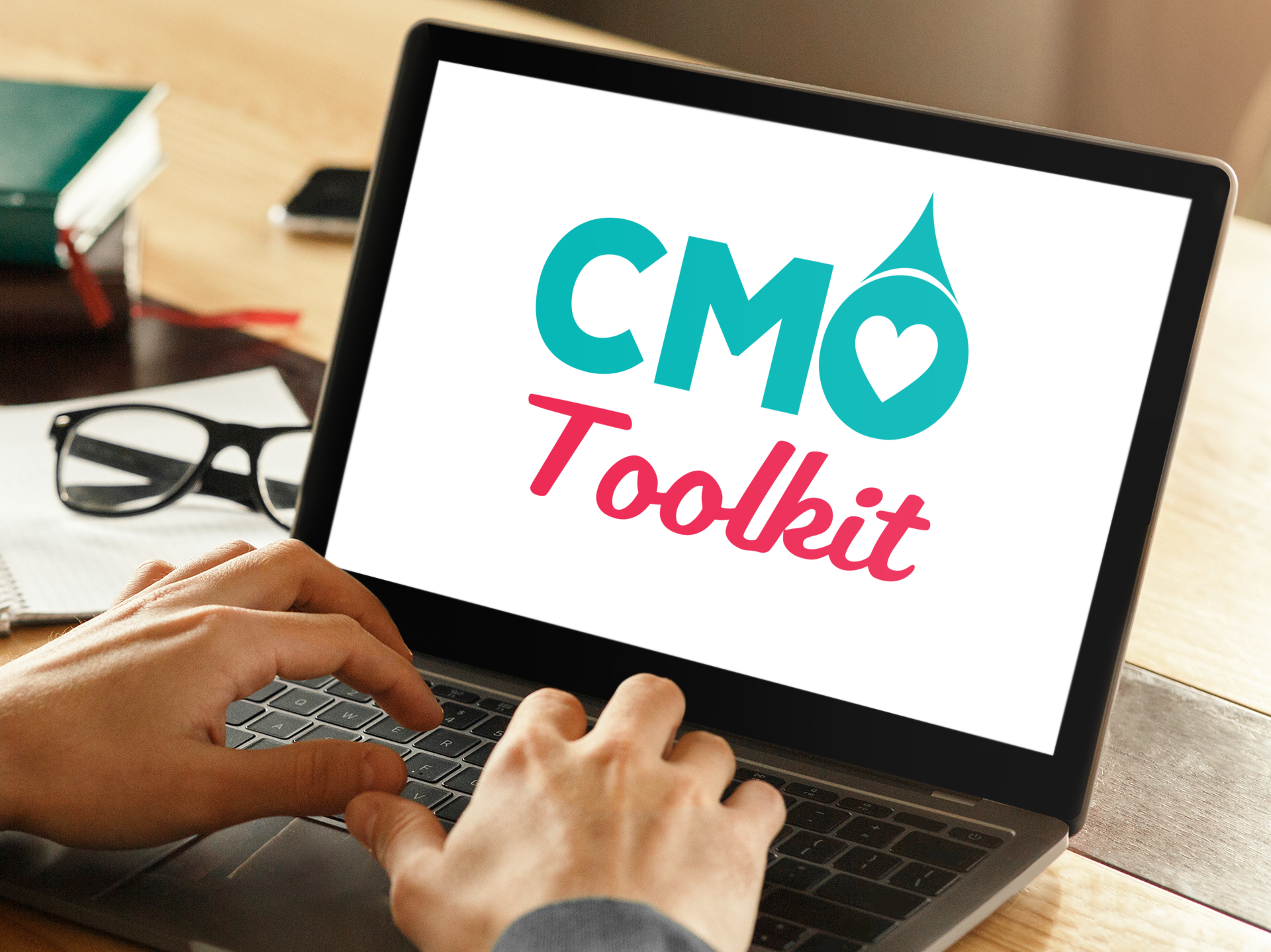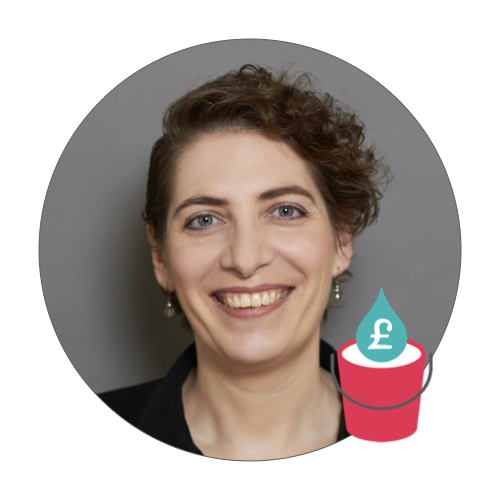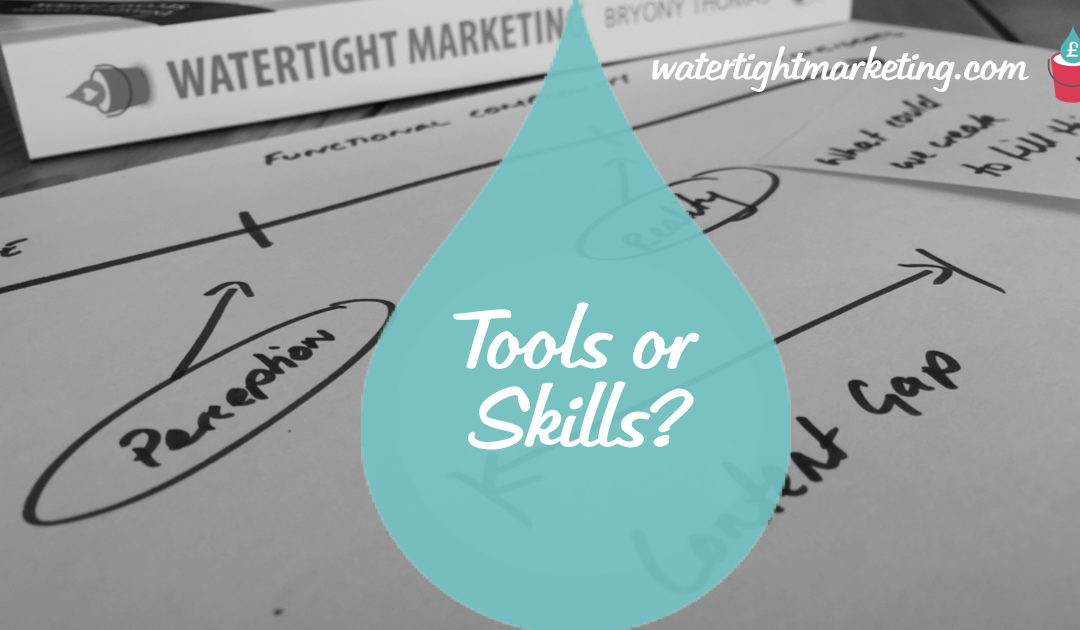Prefer to listen than to read?
This post is also available over on our PodBlog
Reading Time: 5 Minutes
When helping clients assess themselves to create a Touchpoint Leak Traffic Light Report, we often find that people rate themselves highly based on having someone in their team who is good at a particular task – thereby having the Leak covered. In this post, I look at the difference between tools and skills to ask whether this is enough. ~ Bryony Thomas, Author | Watertight Marketing
One of the key frameworks in the Watertight Marketing book is the Thirteen Touchpoint Leaks. These are the areas in a buying journey at which, my research over the last decade, shows most businesses leave money on the table by not having effective marketing in place. To get to a priority plan, we develop a traffic light report of these leaks using key assessment questions.
We’ve seen in over 2000+ of these assessments that many people will rate themselves green on a given leak when there’s a person in their team skilled at filling that gap. But, this is a critical mistake. What we’re asking people to assess if whether they have a tool for the job.
For example, for Leak 2 – Poor On-Boarding, we will ask how new customers are welcomed. You might answer that your account managers are really good at this, and they have it covered. It’s great that you have skilled account managers. But, what we’re asking is are they also equipped with tools. In this example, these tools might include a welcome checklist and nicely designed welcome pack. At Leak 4 – No Gateway, a skill might be someone who’s great at writing pitches and proposals. A tool here would include a proposal template, copy library and a selection of pre-designed diagrams and images for use in proposals.
What’s the difference between a skill and a tool?
A skill resides in an individual. A human, who can have an off day, or leave. A tool is a tangible item that you can point to, and can be picked up by more than one skilled person and put to good use. A tool can be used time and time again, and refined over time.
Can you grow a business without these tools?
Now, of tools and skills – it is absolutely possible to grow a business on pure skill. In fact many businesses do exactly this. A sales team can generate and close business creating deals from scratch each time. However, a highly effective sales team creates tools as they go. That person who’s great at proposals starts to build out templates. The account managers sit down and collate a welcome checklist for everyone to use. Skills matched with effective tools are sharper and more scalable.
So my answer is yes you can grow a business without these tools, but why would you want to make your life harder than it needs to be?
What tools do you need across the sales journey?
For each of the Touchpoint Leaks there are tried and tested tools that you can put in place for your business (See Part 3, Watertight Marketing). Typically, these include:
- Content (posts, videos, papers, books, etc.)
- Checklists
- Templates
- Content libraries (copy, imagery, social posts, case studies, etc.)
- Collateral (brochures, product sheets, sales pages, etc.)
- Automations & prompts
To work out which tools you need to really make the most of your skills, take a look at chapter 2 in Watertight Marketing or use our video-guided assessment to create your own Touchpoint Leak Traffic Light Report by joining out CMO Toolkit.
By Bryony Thomas, Author – Watertight Marketing

Subscribe to the CMO Toolkit
Would you like to get your hands on the tools, frameworks, templates, workshop packs, slides, and analysis tools we use with our clients? It’s all waiting for you.

Bryony Thomas
Author & Founder, Watertight Marketing
Bryony Thomas is the creator of the multi-award winning Watertight Marketing methodology, captured in her best-selling book of the same name. She is one of the UK's foremost marketing thinkers, featured by the likes of Forbes, The Guardian, Business Insider and many more, and in-demand speaker for business conferences, in-house sales days and high-level Board strategy days.


